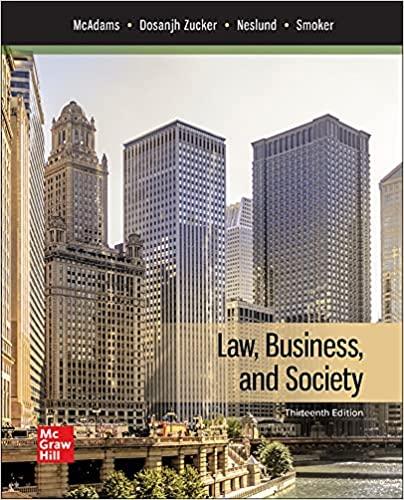By mid-April 2020, about 150 of the largest meat processing plants in the United States accounted for
Question:
By mid-April 2020, about 150 of the largest meat processing plants in the United States accounted for at least 2,200 known cases of COVID-19 and 17 deaths, becoming a national concern alongside long-term care facilities.
• Among the workers at a Wayne Farms plant in Albertville, Alabama, 75 had tested positive and one death had occurred.
• Smithfield’s Sioux Falls, Iowa, plant had more than 200 confirmed cases before it closed. Ten days later the count was approaching 900, making it then the largest cluster of COVID-19 cases in the country.
• A JBS plant in Grand Island, Nebraska, remained open despite 237 workers having tested positive. By mid-May, one-quarter of Nebraska’s confirmed COVID-19 cases were employees at meat processing plants.
• Nationally, there was a significant correlation between high county-wide rates of COVID-19 infection and the presence of a meat processing plant nearby. The counties surrounding more than a third of these plants had rates of infection in the top quartile of all U.S. counties.
Questions
1. If you had a family member employed at the Waterloo, Iowa, Tyson Foods plant discussed above, would you have wanted them to continue working there? How would you feel about the Governor’s pronouncement that, if they didn’t return to work because of health fears, they would be denied unemployment compensation?
2. Early reports of the severity of the COVID-19 outbreaks in meat processing plants implied that, as a nation, our choice was either to subject these workers (and their families and communities) to a high risk of infection, with the concomitant risk of death, or to suffer “the specter of mass meat shortages” in grocery stores. For context, by the time the news media reported the gravity of the problem in meat processing plants, it had already alerted the world that the pandemic in Italy was so advanced that China had sent doctors and substantial medical supplies to help combat the outbreak. In your judgment, is it ethical to knowingly impose a substantially heightened risk of grave illness or death on plant workers to keep beef, pork, and chicken in supermarkets? Explain.
3. Most of the COVID-19 standards provided by federal, state, and local governments are identified as guidance only; they do not legally bind businesses to take any action. In that light, what do you think about the statement, “If these meat plants can’t be held liable, there is no reason for them to take measures to ensure workers are safe. . . . If these workers are essential, protect them. They are being treated like fungible widgets instead of human beings.” Explain.
4. Not surprisingly, COVID-19-related issues most severely impact our most vulnerable populations, including the working poor, who are disproportionately comprised of people of color and immigrants. Is it ethical for the government to issue only non-binding guidance, rather than enforceable standards, in circumstances in which the decision makers who will act on the guidance disproportionately come from advantaged groups? Explain.
5. As described above, OSHA’s mission is “to ensure safe and healthful working conditions for working men and women by setting and enforcing standards.” Yet the current standards published by OSHA and the CDC are guidelines only, without the force of law. By issuing guidance instead of enforceable standards and by leaving states or local governments to negotiate with meat processing plants, has OSHA failed in its duty to workers in those plants? Can state and local governments protect these workers as effectively as OSHA could when those governments have concerns they must take into account beyond the protection of workers (such as keeping a major source of jobs and tax revenues in the community)? Explain.
6. Consider the list of “engineering controls” presented above, controls which OSHA and the CDC evaluate as “the most effective.” How onerous to the meat processing companies are they? Other than the cost of workplace modifications and the revenues lost while they are put in place, what impacts might the companies experience from implementing those controls? Explain.
7. Assume that, upon reopening the economy, returning office workers across all sectors start contracting COVID-19 at rates similar to that experienced in meat processing plants at the beginning of the pandemic. Further assume that the increase is attributable, in large part, to HVAC (heating, ventilating, air conditioning) systems and that safety could be dramatically improved by modifying or replacing those costly systems. Would you expect OSHA to issue nonbinding guidance for building owners to merely consider in responding to the outbreaks? Explain.
Step by Step Answer:

Law Business And Society
ISBN: 9781260247794
13th Edition
Authors: Tony McAdams, Kiren Dosanjh Zucker, Kristofer Neslund, Kari Smoker





